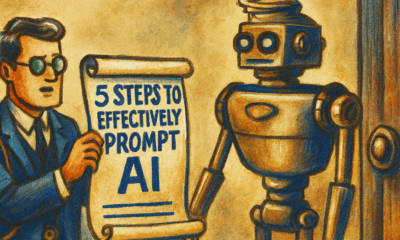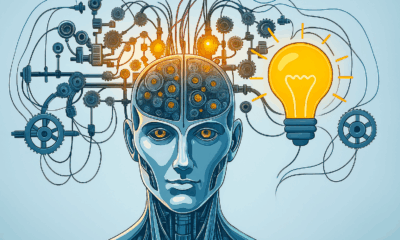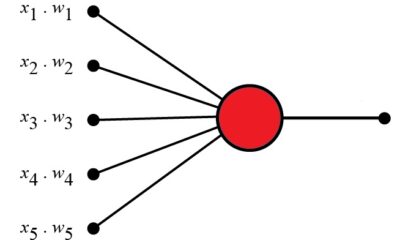Education
How Computers Learn

- Share
- Tweet /data/web/virtuals/375883/virtual/www/domains/spaisee.com/wp-content/plugins/mvp-social-buttons/mvp-social-buttons.php on line 63
https://spaisee.com/wp-content/uploads/2025/06/edu1-1-1000x600.png&description=How Computers Learn', 'pinterestShare', 'width=750,height=350'); return false;" title="Pin This Post">
Have you ever wondered how your phone suggests the perfect song, how a game knows your next move, or how a robot vacuum avoids crashing into your dog? It’s all because computers can learn—and they do it in a way that’s kind of like how you figure things out every day! Today, we’re diving into two super-cool tricks computers use to get smarter: forward propagation and back propagation. Don’t worry about the fancy names—they’re just ways computers guess and improve, and I’ll break them down so they’re as easy as pie. Ready? Let’s jump in!
What’s a Neural Network? Your Brain’s Clever Cousin
First things first: to understand how computers learn, we need to know what a neural network is. Picture your brain as a huge team of friends passing notes to solve a mystery, like figuring out what’s in a surprise gift box. Each friend reads the note, adds their own clue (like “It’s small!” or “It rattles!”), and passes it along. That’s how a neural network works—it’s a bunch of tiny helpers (called neurons) working together to figure stuff out.
Here’s the basic setup of a neural network:
- Input Layer: This is where the computer gets its info, like a picture of a dog, the sound of a voice, or the temperature outside.
- Hidden Layers: These are the “thinking” layers, like detectives looking for hints. They ask stuff like, “Does this picture have floppy ears?” or “Is it chilly enough for a sweater?”
- Output Layer: This is the final answer—like “It’s a dog!” or “Yes, grab that sweater!”
These layers are connected by little pathways, kind of like how you connect dots in a puzzle. The computer uses those pathways to decide what’s important and what’s not. It’s similar to how you learn that studying a little every day helps you ace a test—the computer tweaks how it pays attention to clues over time.
Fun Fact: Neural networks got their name because scientists were inspired by how your brain works! Your brain has about 86 billion neurons (those tiny helpers), while even the biggest computer neural networks have way fewer, like millions at most. So, you’re still the champion learner!
Another Way to Think About It: Imagine a neural network as a big kitchen crew making your favorite pizza. The input layer gathers ingredients (like dough and sauce), the hidden layers mix and match them (deciding how much cheese or pepperoni), and the output layer serves up the final pizza (yum or yuck?). That’s the teamwork vibe of a neural network!
Forward Propagation: Taking a Guess, Step by Step
Now, let’s talk about forward propagation. It’s the first big trick a neural network uses, like when the computer takes a guess at something. Imagine you’re trying to decide if you need a jacket for recess. You peek outside and see the temperature (that’s your input). Then, you think, “Hmm, last time it was this cold, I shivered” (that’s the hidden layers doing their job). Finally, you decide, “Yup, jacket time!” (that’s the output). That’s forward propagation in action—information zooming from start to finish.
Here’s how it works in a computer:
- Grabbing the Clues: The input layer takes in the data, like the colors and shapes in a photo of an animal.
- Thinking It Over: The hidden layers look for patterns. They might wonder, “Are these pointy ears? Is this a fluffy tail?”
- Making a Guess: The output layer spits out an answer, like “I’m 80% sure it’s a cat!”
At first, the computer’s guess might be totally off, like when you guess “pizza” for lunch but it’s tacos. That’s okay—it’s just starting out, like when you’re new at guessing in a game of charades. The magic happens when it learns to get better, which we’ll get to soon!
Everyday Example: Think about guessing what’s in a mystery bag by feeling it. You touch something round and squishy, so you guess “orange.” That’s forward propagation—taking what you know and making your best shot at an answer.
Another Fun Example: Picture a teacher asking, “What’s 2 + 2?” Your brain grabs the numbers (input), thinks about what they mean together (hidden layers), and says “4” (output). A neural network does the same thing, but with way more steps—like solving a giant riddle!
Why It’s Called ‘Forward’: The info moves forward through the layers, from the input to the output, like passing a baton in a relay race. No looking back yet—just charging ahead with a guess!
Back Propagation: Learning from Oopsies
So, what happens if the computer guesses “cat” but the picture was actually a raccoon? Does it throw in the towel? Nope! It uses back propagation to fix its mistakes and get smarter. This is the second big trick—and it’s all about learning from slip-ups.
Here’s the step-by-step:
- Checking the Answer: The computer finds out the real answer, like, “Oops, it’s a raccoon, not a cat.”
- Looking Back: It retraces its steps, asking, “Where did I go wrong? Did I think the eyes were too cat-like and ignore that sneaky raccoon mask?”
- Tweaking the Plan: It adjusts those pathways between layers, so next time it’ll focus on the right clues, like the raccoon’s black eye patches.
It’s like when you spell “cat” as “kat” on a quiz. Your teacher marks it wrong, so you practice the right way until you nail it. The computer does that too—it practices until it’s a pro!
Sports Analogy: Imagine shooting a basketball. You aim, shoot, and miss because the ball went too far left. So, you think, “Next time, I’ll aim more to the right,” and try again. That’s back propagation—the computer adjusts after every miss to score a basket next time.
Game Analogy: Ever play “Hot or Cold”? If someone says “cold” (you’re wrong), you change direction. When they say “hot” (you’re close), you keep going. Back propagation is the computer playing that game with itself, getting “hotter” with every tweak.
Classroom Example: Think about learning multiplication. If you say 5 × 3 is 10, your teacher says, “Nope, it’s 15.” You figure out what you miscalculated and fix it for next time. The computer learns the same way—by correcting itself step by step.
Why It’s Called ‘Back’: The computer goes backward through the layers, from the output back to the input, fixing things as it goes—like rewinding a movie to see where the plot twisted wrong!
The Learning Loop: Guess, Check, Repeat!
Here’s where it gets awesome: forward and back propagation team up like peanut butter and jelly. The computer:
- Guesses with forward propagation.
- Checks its mistakes and fixes them with back propagation.
- Tries again with a sharper guess.
It keeps looping like this—guess, check, tweak, guess again—until it’s super good at what it’s doing. It’s how your video game learns to throw harder challenges at you or how your music app picks songs that make you dance. Practice makes perfect, even for computers!
Real-Life Connection: Remember learning to ride a bike? You wobbled, fell, then figured out how to balance better each time. That’s the computer’s learning loop—trying, falling short, and getting back up smarter.
Another Connection: It’s like baking cookies. You mix the dough (forward propagation), taste it, and realize it needs more sugar (back propagation), then adjust the recipe and bake again. The computer keeps “baking” its guesses until they’re deliciously right!
How Long Does It Take?: Sometimes it takes thousands of loops for the computer to get good—way more than your bike-riding practice! But computers are fast, so it happens in minutes or hours, not days.
Why This Matters: Smart Computers Everywhere
Forward and back propagation are the secret sauce behind tons of cool tech. They let computers:
- Guess stuff (like what’s in a photo or what you’ll say next).
- Learn from mistakes (by tweaking their guesses).
- Get better over time (like you do with piano or skateboarding).
Check out some amazing things they help with:
- Medicine: Computers help doctors spot diseases in X-rays, like finding a tiny crack in a bone or a shadow that means trouble.
- Self-Driving Cars: They teach cars to see stop signs, avoid pedestrians, and stay on the road—all by guessing and learning from what they see.
- Video Games: Ever notice how games get tougher as you play? That’s the computer learning your moves and upping the challenge.
- Voice Assistants: Siri or Alexa listens to you, guesses what you want (like “play music”), and gets better at understanding your voice over time.
- Art and Music: Some computers even create paintings or songs by learning what looks or sounds cool—pretty wild, right?
Future Fun: Scientists are using neural networks to solve big problems—like predicting earthquakes, cleaning up oceans, or even talking to animals (imagine chatting with your cat!).
You’re Part of This Story!
Now you know the magic behind how computers learn with forward and back propagation. They guess (forward), fix their oopsies (backward), and keep going until they’re pros—just like you do when you study, play sports, or try a new hobby. Isn’t it neat how you and computers learn in such similar ways?
Your Superpower: Your brain is still way cooler than any computer. It can dream, laugh, and invent stuff a neural network can’t even imagine. But you can team up with computers to make the world even more awesome!
Try This: Next time you play a game or use an app, think, “Is this computer guessing what I’ll do? How did it learn that?” You’re already a detective of smart machines!
Dream Big: Maybe one day, you’ll teach a computer to recognize your favorite Pokémon, design a game that’s unbeatable, or help save the planet with tech. The world of neural networks is wide open, and you’re just getting started!
Fun Fact: The biggest neural networks today—like the ones in self-driving cars—have millions of neurons working together. That’s a lot, but your brain’s 86 billion neurons still win the prize for the ultimate learning machine!
Education
A Turning Point in AI: OpenAI’s “AI Progress and Recommendations”
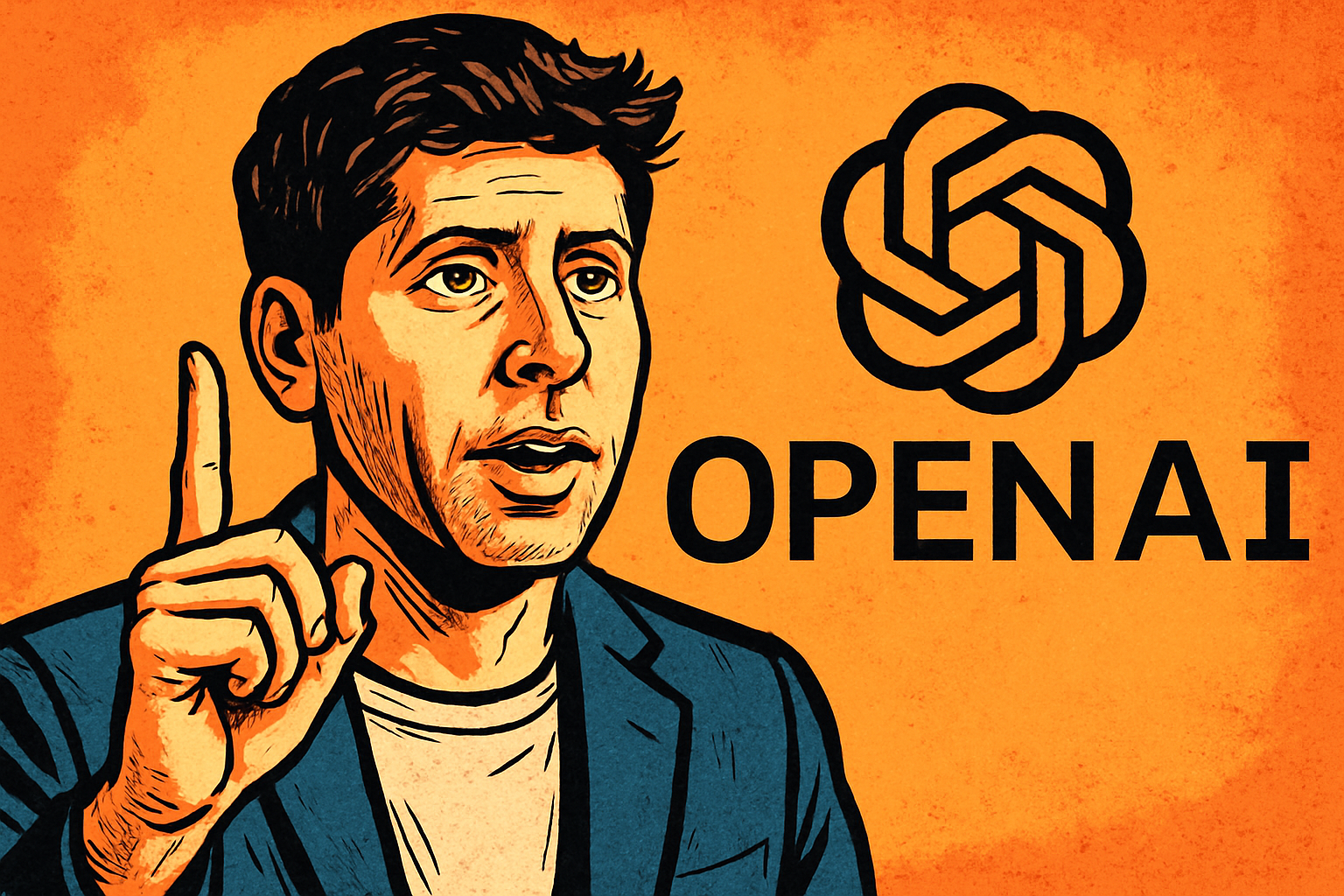
Capabilities Advancing, but the World Stays the Same
In a post shared recently by Sam Altman, OpenAI laid out a new framework reflecting just how far artificial intelligence has come — and how far the company believes we have yet to go. The essay begins with the recognition that AI systems today are performing at levels unimaginable only a few years ago: they’re solving problems humans once thought required deep expertise, and doing so at dramatically falling cost. At the same time, OpenAI warns that the gap between what AI is capable of and what society is actually experiencing remains vast.
OpenAI describes recent AI progress as more than incremental. Tasks that once required hours of human effort can now be done by machines in minutes. Costs of achieving a given level of “intelligence” from AI models are plummeting — OpenAI estimates a roughly forty-fold annual decline in cost for equivalent capability. Yet while the technology has advanced rapidly, everyday life for most people remains largely unchanged. The company argues that this reflects both the inertia of existing systems and the challenge of weaving advanced tools into the fabric of society.
Looking Ahead: What’s Next and What to Expect
OpenAI forecasts that by 2026 AI systems will be capable of “very small discoveries” — innovations that push beyond merely making human work more efficient. By 2028 and beyond, the company believes we are likely to see systems that can make even more significant discoveries — though it acknowledges the uncertainties inherent in such predictions. The post also underscores that the future of AI is not just about smarter algorithms, but about shaped social, economic and institutional responses.
A Framework for Responsible Progress
The document outlines three major pillars that OpenAI deems essential for navigating the AI transition responsibly. First, labs working at the frontier must establish shared standards, disclose safety research, and coordinate to avoid destructive “arms-race” dynamics. In OpenAI’s view, this is akin to how building codes and fire standards emerged in prior eras.
Second, there must be public oversight and accountability aligned with the capabilities of the technology — meaning that regulations and institutional frameworks must evolve in concert with rising AI power. OpenAI presents two scenarios: one in which AI evolves in a “normal” mode and traditional regulatory tools suffice, the other in which self-improving or super-intelligent systems behave in novel ways and demand new approaches.
Third, the concept of an “AI resilience ecosystem” is introduced — a system of infrastructure, monitoring, response teams and tools, analogous to the cybersecurity ecosystem developed around the internet. OpenAI believes such resilience will be crucial regardless of how fast or slow AI evolves.
Societal Impact and Individual Empowerment
Underlying the vision is the belief that AI should not merely make things cheaper or faster, but broaden access and improve lives. OpenAI expects AI to play major roles in fields like healthcare diagnostics, materials science, climate modeling and personalized education — and aims for advanced AI tools to become as ubiquitous as electricity, clean water or connectivity. However, the transition will be uneven and may strain the socioeconomic contract: jobs will change, institutions may be tested, and we may face hard trade-offs in distribution of benefit.
Why It Matters
This statement represents a turning point — not just for OpenAI, but for the AI ecosystem broadly. It signals that leading voices are shifting from what can AI do to how should AI be governed, deployed and embedded in society. For investors, policy-makers and technologists alike, the message is clear: the existence of powerful tools is no longer the question. The real question is how to capture their upside while preventing cascading risk.
In short, OpenAI is saying: yes, AI is now extremely capable and moving fast. But the institutions, policies and social frameworks around it are still catching up. The coming years are not just about brighter tools — they’re about smarter integration. And for anyone watching the next phase of generative AI, this document offers a foundational lens.
AI Model
How to Get Factual Accuracy from AI — And Stop It from “Hallucinating”
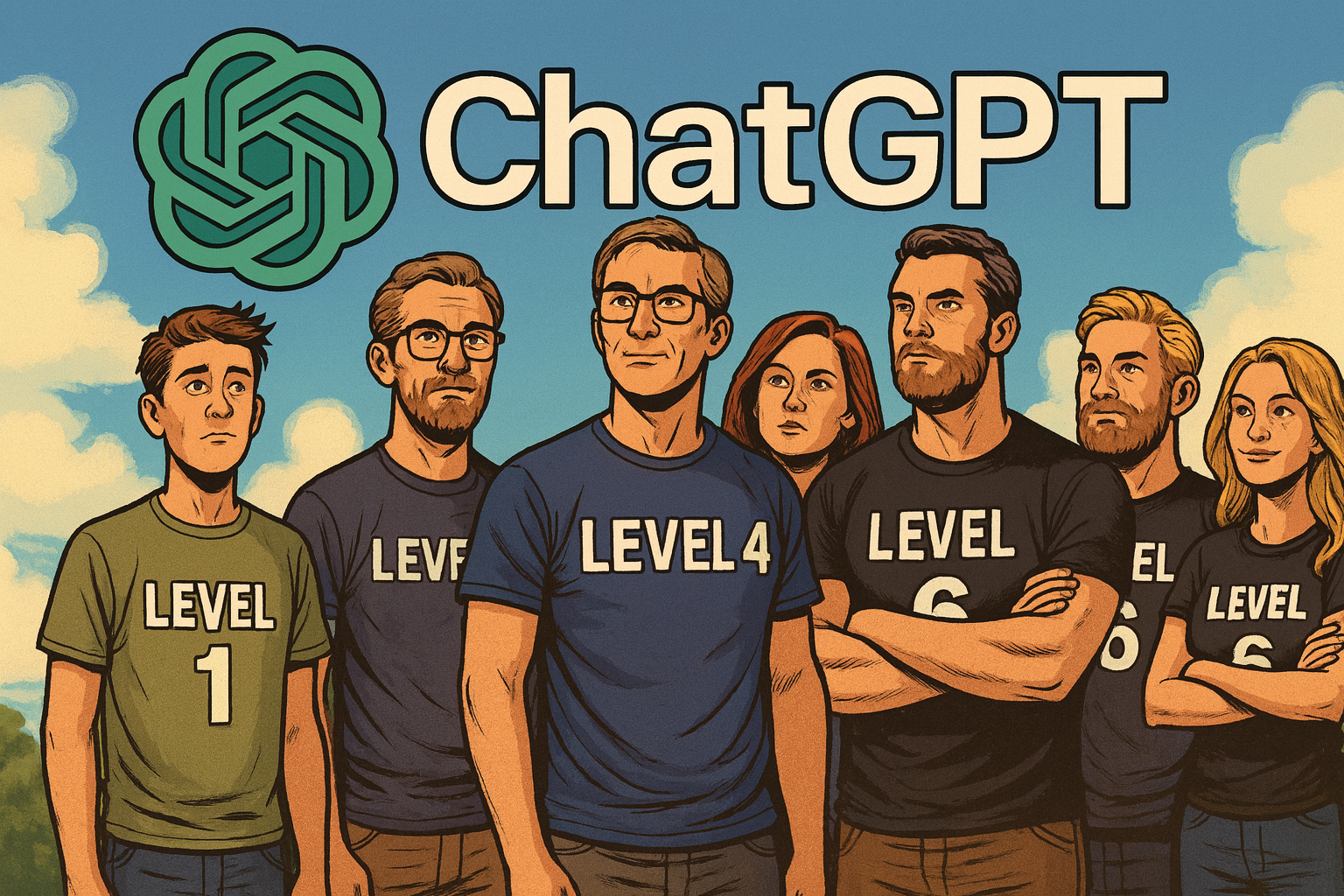
Everyone wants an AI that tells the truth. But the reality is — not all AI outputs are created equal. Whether you’re using ChatGPT, Claude, or Gemini, the precision of your answers depends far more on how you ask than what you ask. After months of testing, here’s a simple “six-level scale” that shows what separates a mediocre chatbot from a research-grade reasoning engine.
Level 1 — The Basic Chat
The weakest results come from doing the simplest thing: just asking.
By default, ChatGPT uses its Instant or fast-response mode — quick, but not very precise. It generates plausible text rather than verified facts. Great for brainstorming, terrible for truth.
Level 2 — The Role-Play Upgrade
Results improve dramatically if you use the “role play” trick. Start your prompt with something like:
“You are an expert in… and a Harvard professor…”
Studies confirm this framing effect boosts factual recall and reasoning accuracy. You’re not changing the model’s knowledge — just focusing its reasoning style and tone.
Level 3 — Connect to the Internet
Want better accuracy? Turn on web access.
Without it, AI relies on training data that might be months (or years) old.
With browsing enabled, it can pull current information and cross-check claims. This simple switch often cuts hallucination rates in half.
Level 4 — Use a Reasoning Model
This is where things get serious.
ChatGPT’s Thinking or Reasoning mode takes longer to respond, but its answers rival graduate-level logic. These models don’t just autocomplete text — they reason step by step before producing a response. Expect slower replies but vastly better reliability.
Level 5 — The Power Combo
For most advanced users, this is the sweet spot:
combine role play (2) + web access (3) + reasoning mode (4).
This stack produces nuanced, sourced, and deeply logical answers — what most people call “AI that finally makes sense.”
Level 6 — Deep Research Mode
This is the top tier.
Activate agent-based deep research, and the AI doesn’t just answer — it works. For 20–30 minutes, it collects, verifies, and synthesizes information into a report that can run 10–15 pages, complete with citations.
It’s the closest thing to a true digital researcher available today.
Is It Perfect?
Still no — and maybe never will be.
If Level 1 feels like getting an answer from a student doing their best guess, then Level 4 behaves like a well-trained expert, and Level 6 performs like a full research team verifying every claim. Each step adds rigor, depth, and fewer mistakes — at the cost of more time.
The Real Takeaway
When people say “AI is dumb,” they’re usually stuck at Level 1.
Use the higher-order modes — especially Levels 5 and 6 — and you’ll see something different: an AI that reasons, cites, and argues with near-academic depth.
If truth matters, don’t just ask AI — teach it how to think.
AI Model
81% Wrong: How AI Chatbots Are Rewriting the News With Confident Lies
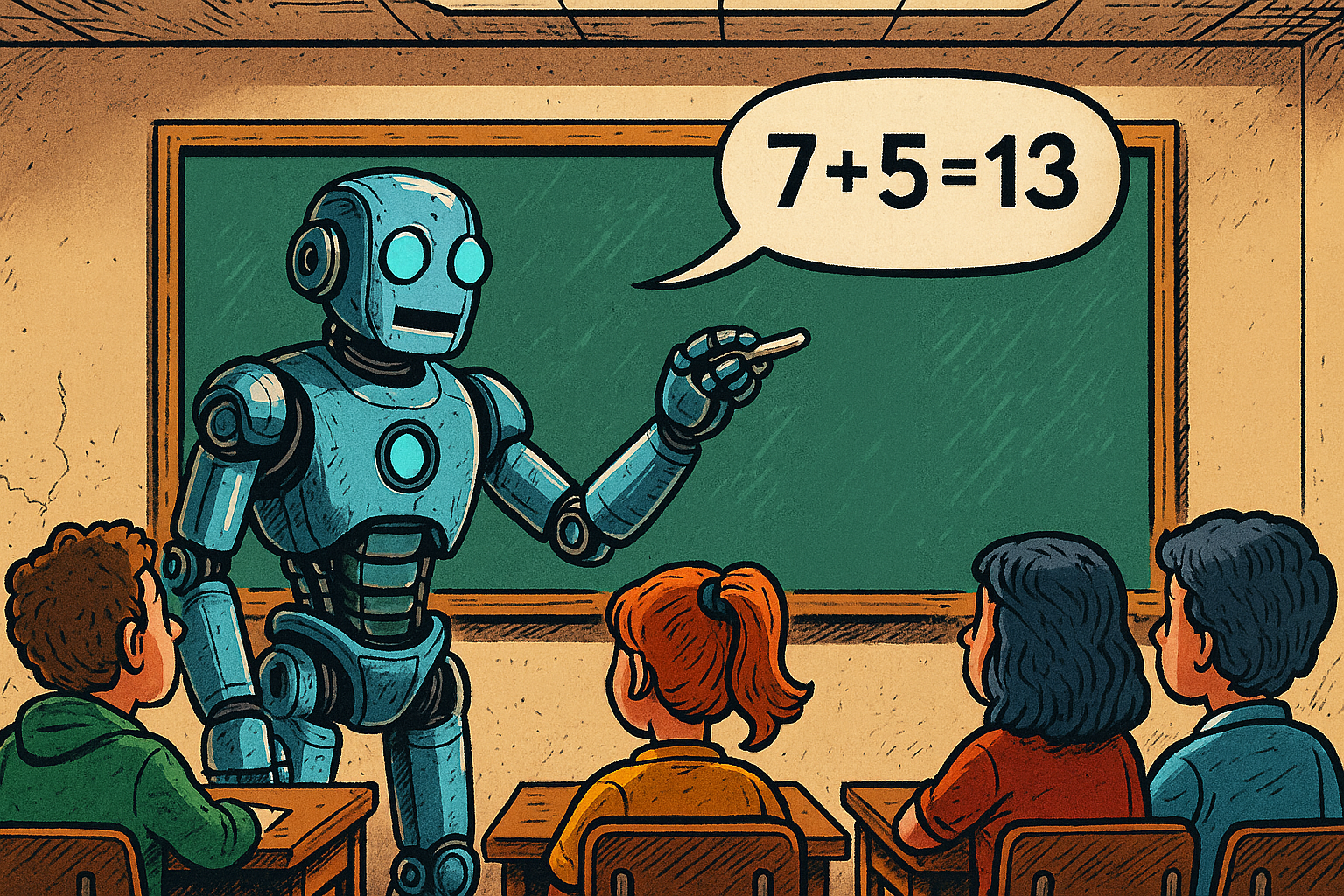
In 2025, millions rely on AI chatbots for breaking news and current affairs. Yet new independent research shows these tools frequently distort the facts. A European Broadcasting Union (EBU) and BBC–supported study found that 45% of AI-generated news answers contained significant errors, and 81% had at least one factual or contextual mistake. Google’s Gemini performed the worst, with sourcing errors in roughly 72% of its responses. The finding underscores a growing concern: the more fluent these systems become, the harder it is to spot when they’re wrong.
Hallucination by Design
The errors aren’t random; they stem from how language models are built. Chatbots don’t “know” facts—they generate text statistically consistent with their training data. When data is missing or ambiguous, they hallucinate—creating confident but unverified information.
Researchers from Reuters, the Guardian, and academic labs note that models optimized for plausibility will always risk misleading users when asked about evolving or factual topics.
This pattern isn’t new. In healthcare tests, large models fabricated medical citations from real journals, while political misinformation studies show chatbots can repeat seeded propaganda from online data.
Why Chatbots “Lie”
AI systems don’t lie intentionally. They lack intent. But their architecture guarantees output that looks right even when it isn’t. Major causes include:
- Ungrounded generation: Most models generate text from patterns rather than verified data.
- Outdated or biased training sets: Many systems draw from pre-2024 web archives.
- Optimization for fluency over accuracy: Smooth answers rank higher than hesitant ones.
- Data poisoning: Malicious actors can seed misleading information into web sources used for training.
As one AI researcher summarized: “They don’t lie like people do—they just don’t know when they’re wrong.”
Real-World Consequences
- Public trust erosion: Users exposed to polished but false summaries begin doubting all media, not just the AI.
- Amplified misinformation: Wrong answers are often screenshot, shared, and repeated without correction.
- Sector-specific risks: In medicine, law, or finance, fabricated details can cause real-world damage. Legal cases have already cited AI-invented precedents.
- Manipulation threat: Adversarial groups can fine-tune open models to deliver targeted disinformation at scale.
How Big Is the Problem?
While accuracy metrics are worrying, impact on audiences remains under study. Some researchers argue the fears are overstated—many users still cross-check facts. Yet the speed and confidence of AI answers make misinformation harder to detect. In social feeds, the distinction between AI-generated summaries and verified reporting often vanishes within minutes.
What Should Change
- Transparency: Developers should disclose when responses draw from AI rather than direct source retrieval.
- Grounding & citations: Chatbots need verified databases and timestamped links, not “estimated” facts.
- User literacy: Treat AI summaries like unverified tips—always confirm with original outlets.
- Regulation: Oversight may be necessary to prevent automated systems from impersonating legitimate news.
The Bottom Line
The 81% error rate is not an isolated glitch—it’s a structural outcome of how generative AI works today. Chatbots are optimized for fluency, not truth. Until grounding and retrieval improve, AI remains a capable assistant but an unreliable journalist.
For now, think of your chatbot as a junior reporter with infinite confidence and no editor.
-

 AI Model2 months ago
AI Model2 months agoHow to Use Sora 2: The Complete Guide to Text‑to‑Video Magic
-
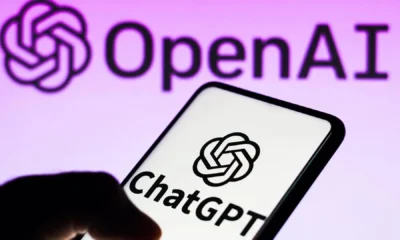
 AI Model4 months ago
AI Model4 months agoTutorial: How to Enable and Use ChatGPT’s New Agent Functionality and Create Reusable Prompts
-

 AI Model5 months ago
AI Model5 months agoComplete Guide to AI Image Generation Using DALL·E 3
-

 AI Model5 months ago
AI Model5 months agoMastering Visual Storytelling with DALL·E 3: A Professional Guide to Advanced Image Generation
-

 AI Model3 months ago
AI Model3 months agoTutorial: Mastering Painting Images with Grok Imagine
-

 News2 months ago
News2 months agoOpenAI’s Bold Bet: A TikTok‑Style App with Sora 2 at Its Core
-

 AI Model7 months ago
AI Model7 months agoGrok: DeepSearch vs. Think Mode – When to Use Each
-

 Tutorial2 months ago
Tutorial2 months agoFrom Assistant to Agent: How to Use ChatGPT Agent Mode, Step by Step






